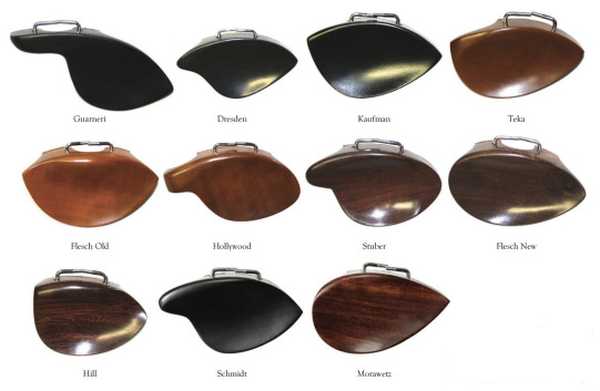5 Types of Different Violin Chin Rests
- The Flesch Chinrest. Named for Hungarian violinist Carl Flesch, this features a cupped chinrest centered over the tailpiece, much like Spohr's original.
- The Guarneri Chinrest. ...
- The Dresden Chinrest. ...
- The Kaufman Chinrest. ...
- Morawetz Chinrest.
- How do you pick a violin chin rest?
- How do I choose a chin rest?
- What is the chin rest on a violin called?
- Did old violins have chin rests?
How do you pick a violin chin rest?
The proper height for a chin rest is one that leaves a gap of about one finger-width between the top of the rest and the jaw when the eyes are looking forward (and not looking up or down). If one must nod down in an exaggerated fashion to touch the top of the chin rest, it is too short.
How do I choose a chin rest?
If you play with your chin centered over the tailpiece and the instrument higher up on your shoulder, you should choose something like the Flesch or Zitsman. However, most hold their violin with their chin off to the side and one of the other styles might work best.
What is the chin rest on a violin called?
A chinrest is a shaped piece of wood (or plastic) attached to the body of a violin or a viola to aid in the positioning of the player's jaw or chin on the instrument. The chinrest may be made of ebony, rosewood, boxwood, or plastic.
Did old violins have chin rests?
Violins were used without a chinrest prior to its invention by Louis Spohr around 1820, so Stanley Ritchie's Before the Chinrest covers a wide swath of time encompassing the Renaissance, Baroque, Classical, and early Romantic periods.
 Topmusicanswers
Topmusicanswers



